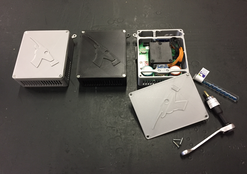As part of the OIE project (Outdoor and Indoor Exposure, https://www.issep.be/wp-content/uploads/Projet-OIE.pdf), residents of Liège carried out measurements of air quality in their day-to-day activities, using air quality ministations developed by ISSeP. A unique number of measurements of atmospheric pollutants were collected both inside and outside buildings. All the data collected contributes to a better understanding of our exposure to air pollution, with potential implications for public health and environmental regulations.
In this study, we observe in particular that
- workers are generally less exposed during working hours than at home
- the highest concentrations of fine particles PM2.5 are recorded during indoor activities
- exposure to black carbon is highest during bus rides and lowest when walking or cycling
This study also provides an original attempt to validate the ATMO-Street air quality model using measurements made during outdoor activities. The comparison of mobile measurements and ATMO-Street results shows that the model estimates a lower outdoor exposure than that calculated from mobile measurements. The results presented in this paper also open up possibilities for future studies, such as carrying out a similar analysis for nitrogen dioxide (NO2), simulating the transfer of pollutants from outdoors to indoors in cars (SNIFECAR project, https://www.issep.be/wp-content/uploads/Projet-Snifecar.pdf) or launching a new citizen science and modelling project focusing on indoor air quality itself.
The whole paper can be consulted here:








